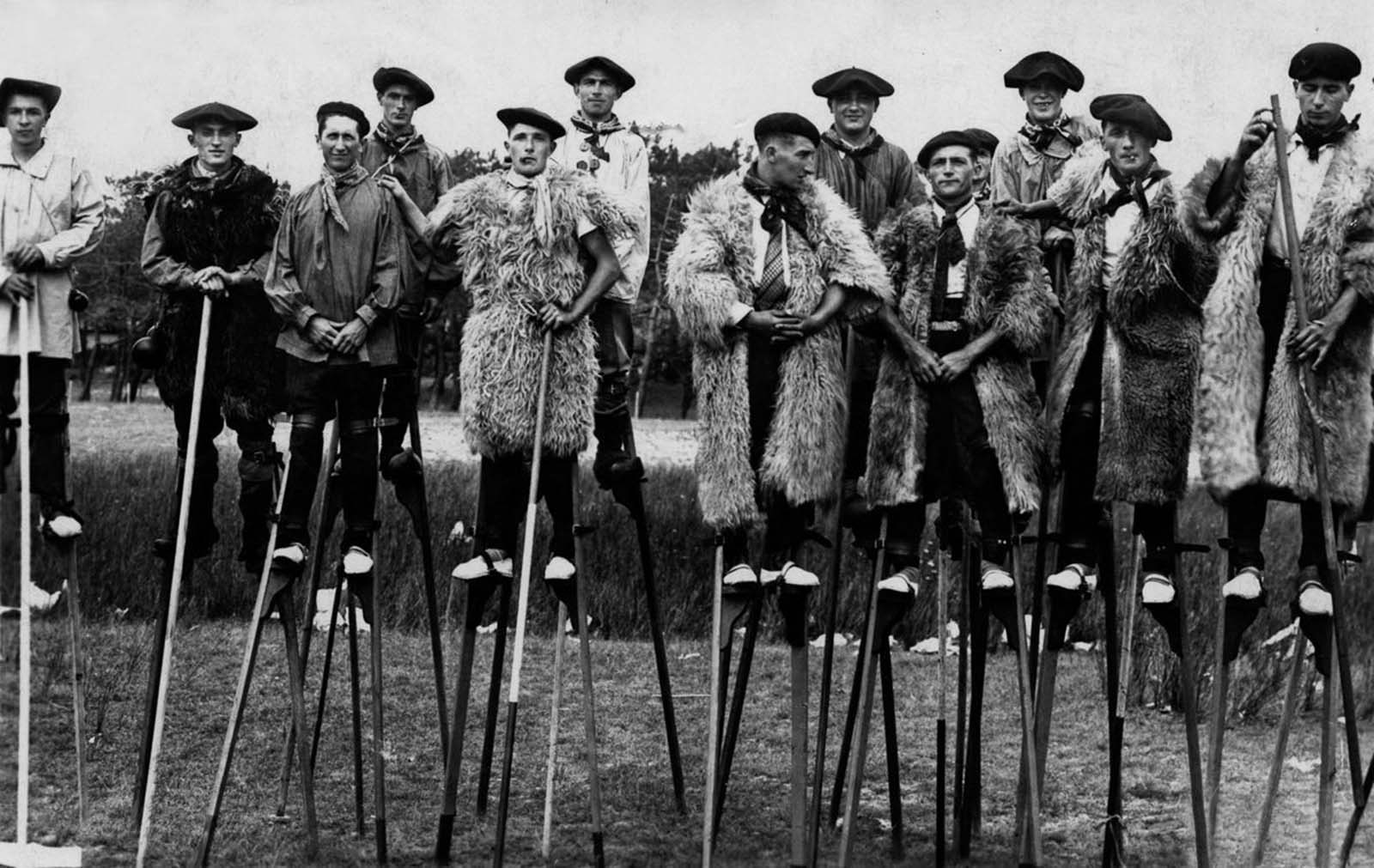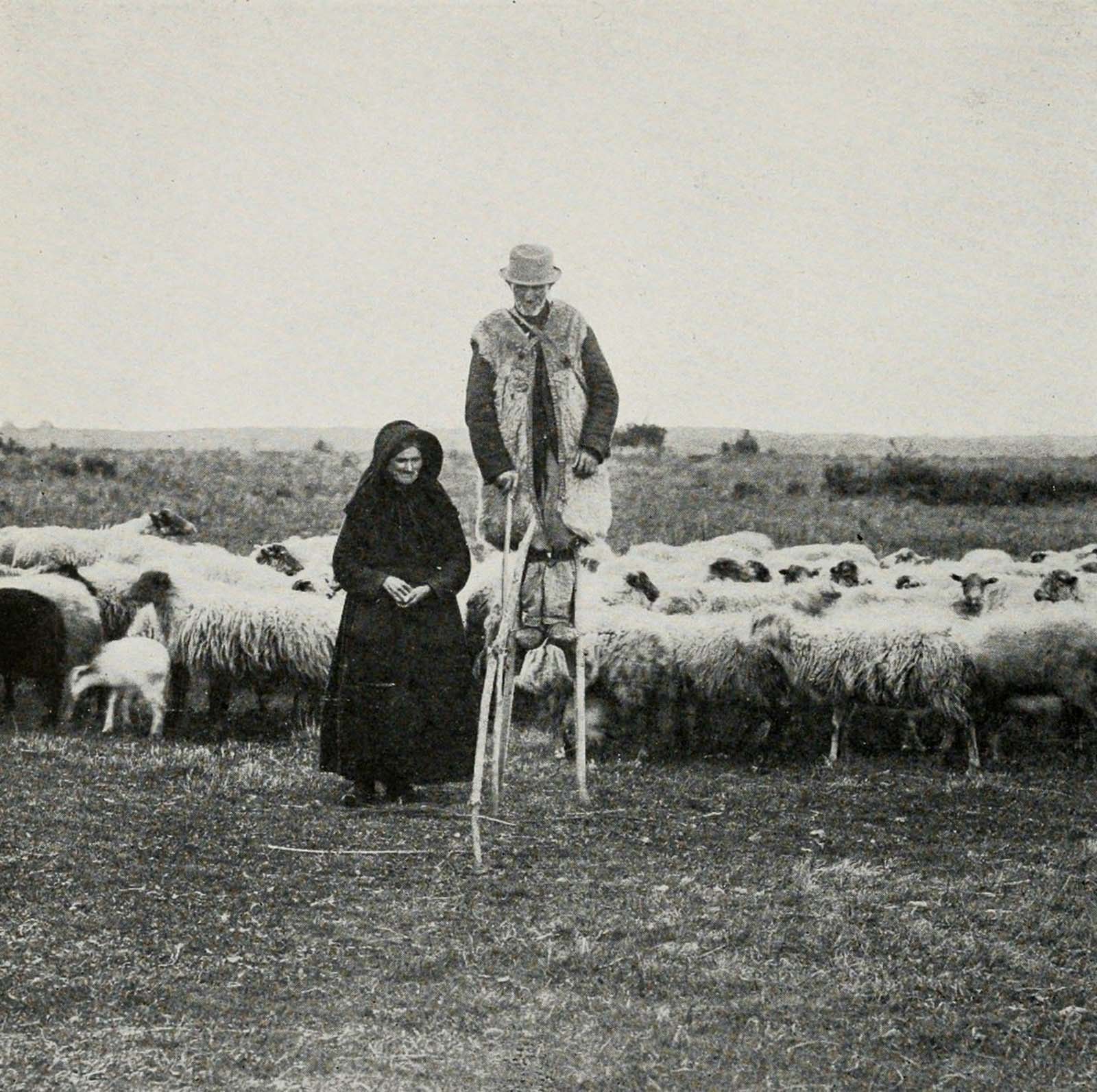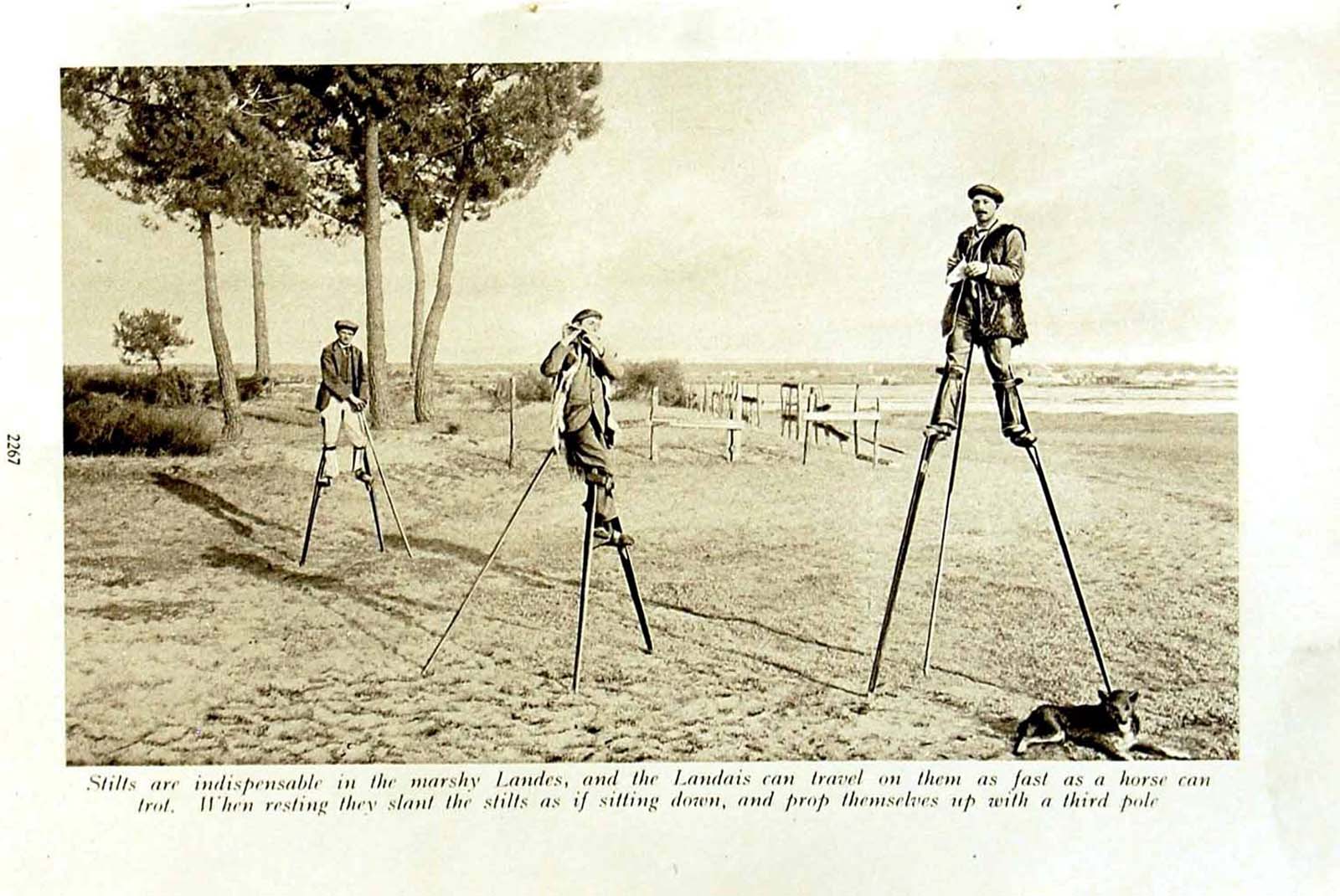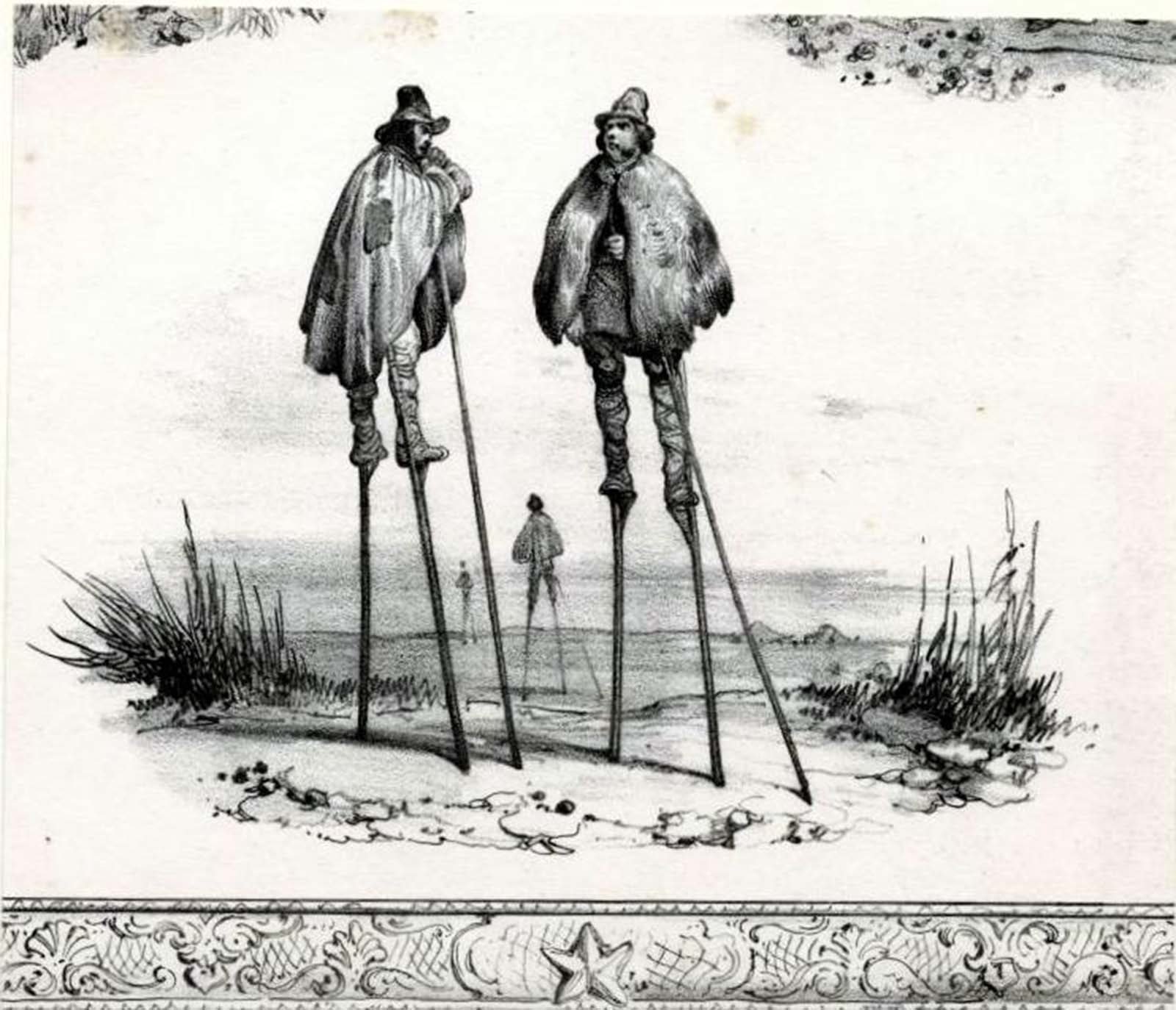Locally referred to as tchangues, or “big legs,” the five-foot wooden stilts were strapped to a person’s legs and supplemented with a long staff which a shepherd used to direct his flock and as a support for resting. Perched comfortably atop this tripod configuration, a shepherd was afforded an elevated view to keep track of his sheep and watch for wolves. The people of Landes were trained in stilt walking from a young age, and were capable of astonishing dexterity and balance, easily running, hopping, and even bending down to pluck flowers. When Empress Josephine visited the region in 1808, an escort of stilt walkers greeted her, their long strides allowing them to keep pace with Josephine’s trotting carriage horses. The stilt shepherds of Landes were written about in the Scientific American Supplement, No. 821, Sep. 26, 1891: “The shepherds of Landes … acquire an extraordinary freedom and skill … knows very well how to preserve his equilibrium; he walks with great strides, stands upright, runs with agility, or executes a few feats of true acrobatism, such as picking up a pebble from the ground, plucking a flower, simulating a fall and quickly rising, running on one foot, etc”. In the 19th century, as the marshes of Landres dried up and the shepherd’s need to move on stilts began to disappear, the practice became strangely fashionable among some of the more eccentric aristocrats of French society. In the early 20th century, stilt marathons were held in Paris, celebrating the French agricultural tradition. (Photo credit: Universal History Archive / UIG / Getty Images). Notify me of new posts by email.
Δ Subscribe








